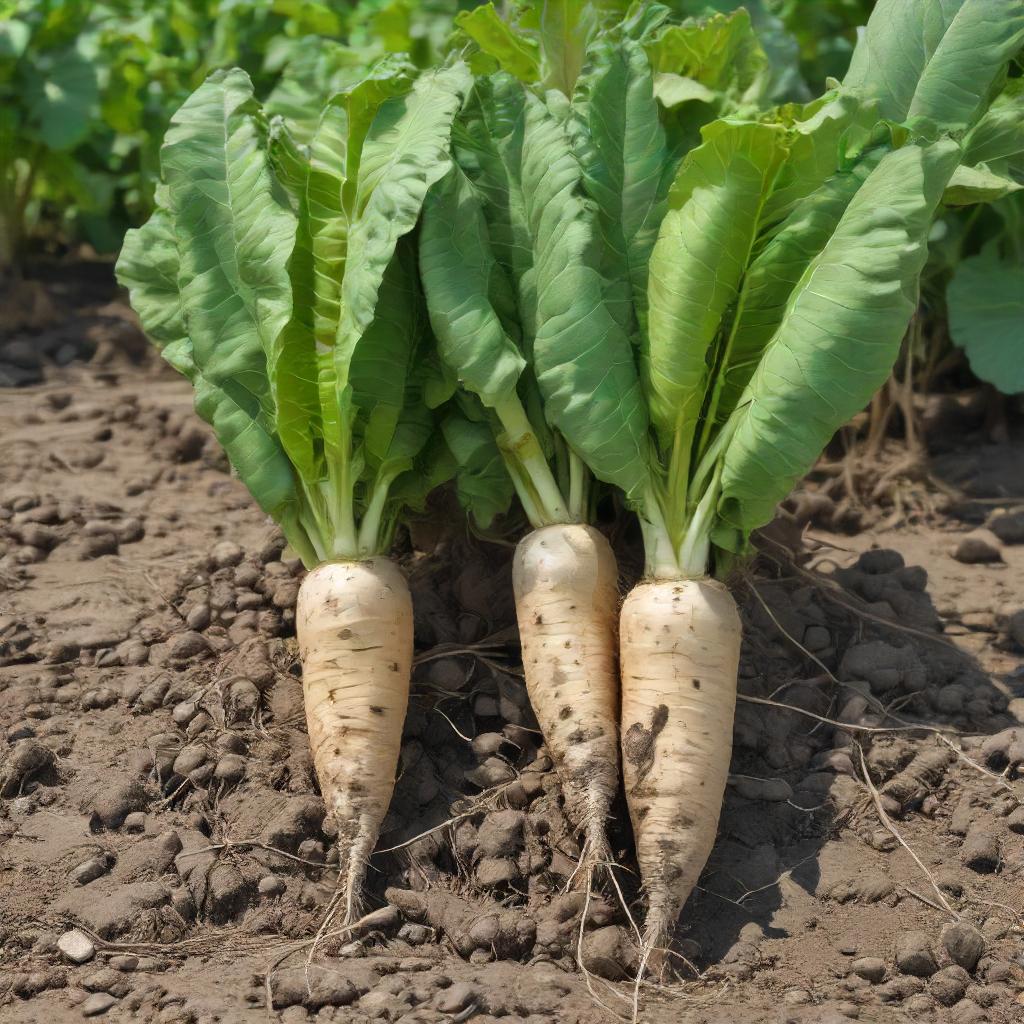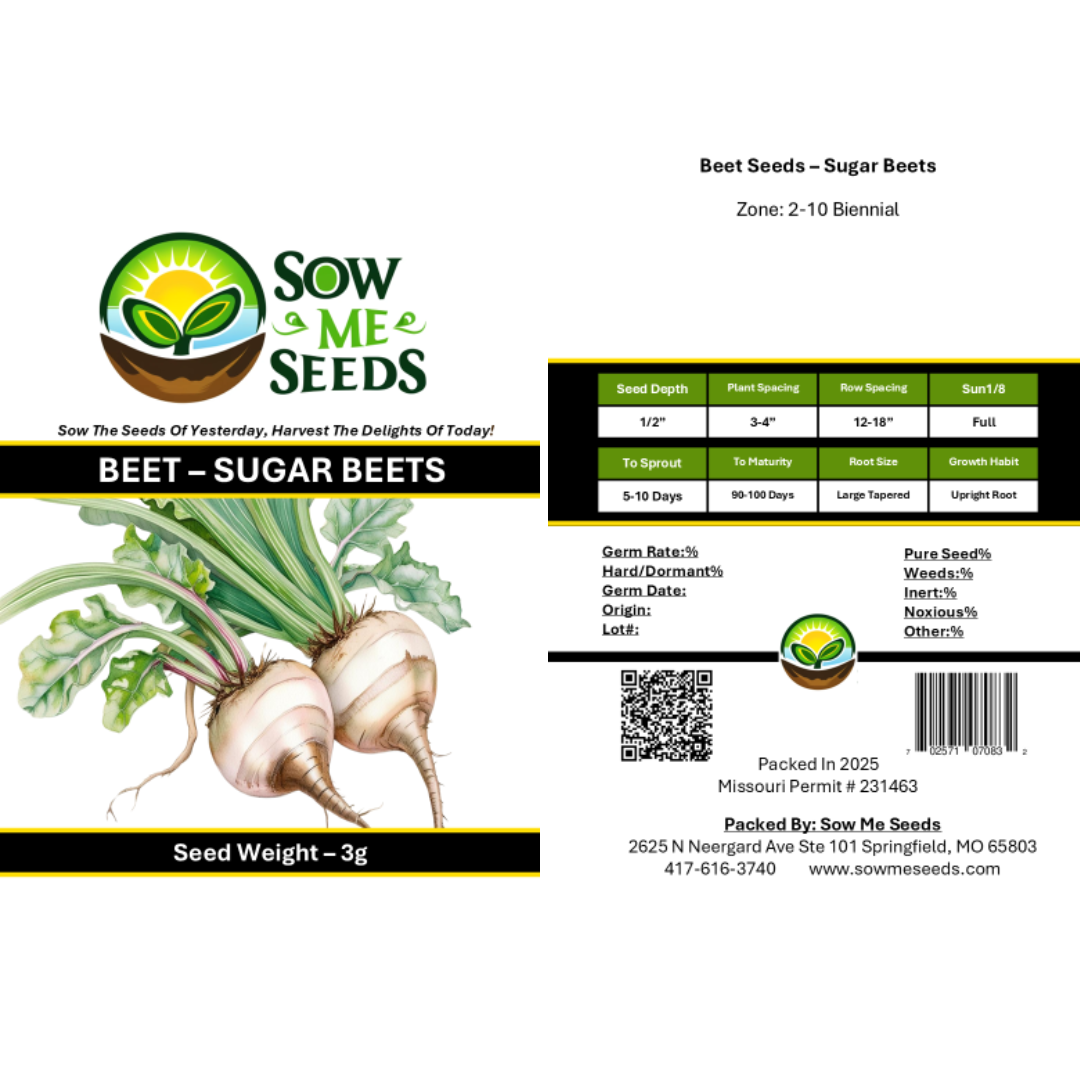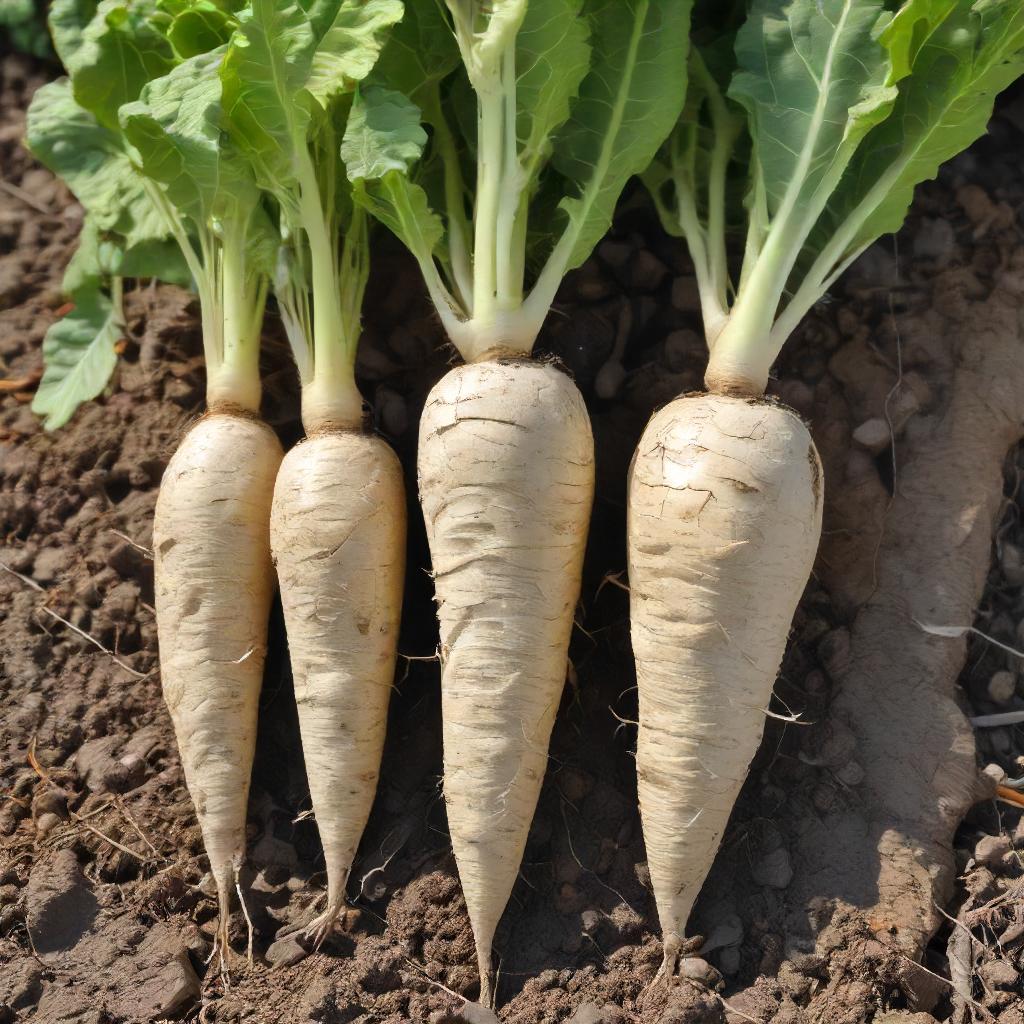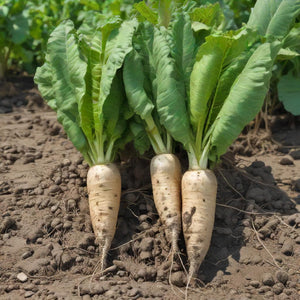- Hardiness Zone: 2-10 Biennial Typically Grown As Annual
Why You’ll Love It
High Sugar Content: Contains up to 16% natural sugar — great for homemade sweeteners or adding mild sweetness to cooked dishes.
Large Roots: Produces big, elongated white roots that grow well in loose, fertile soil.
Dual-Purpose: Can be used in cooking or as a nutritious animal feed crop.
Cold Tolerant: Performs well in cool weather and can be grown into late fall for maximum root development.
Plant Characteristics
Height: 12–18 inches
Growth Habit: Upright leafy greens with large, conical roots
Root Type: White, tapered roots often reaching 3–4 inches in diameter
Days to Maturity: 90–100 days
Hardiness: Cool-season biennial grown as an annual
Flavor and Culinary Uses
Flavor: Milder and less earthy than red beets with a subtle sweetness when cooked
Culinary Uses: Suitable for roasting, boiling, or grating raw into slaws; also used to make homemade beet sugar
Companion Planting Tips
Good Companions: Onions, lettuce, bush beans, and herbs like dill
Avoid Planting Near: Pole beans and tall crops that shade roots
Bonus Benefit: Great soil-breaker crop that helps loosen compact ground while building organic matter
Common Issues and Solutions
Woody Roots: Harvest at full size but before prolonged cold sets in for best texture
Pale Leaves: Could indicate nitrogen deficiency — feed with compost or organic fertilizer
Poor Germination: Soak seeds overnight before planting and keep soil moist during early growth
Seeds Per Packet
| 3g | Approximately 159 |
| 10g | Approximately 530 |
Why You’ll Love It
High Sugar Content: Contains up to 16% natural sugar — great for homemade sweeteners or adding mild sweetness to cooked dishes.
Large Roots: Produces big, elongated white roots that grow well in loose, fertile soil.
Dual-Purpose: Can be used in cooking or as a nutritious animal feed crop.
Cold Tolerant: Performs well in cool weather and can be grown into late fall for maximum root development.
Plant Characteristics
Height: 12–18 inches
Growth Habit: Upright leafy greens with large, conical roots
Root Type: White, tapered roots often reaching 3–4 inches in diameter
Days to Maturity: 90–100 days
Hardiness: Cool-season biennial grown as an annual
Flavor and Culinary Uses
Flavor: Milder and less earthy than red beets with a subtle sweetness when cooked
Culinary Uses: Suitable for roasting, boiling, or grating raw into slaws; also used to make homemade beet sugar
Companion Planting Tips
Good Companions: Onions, lettuce, bush beans, and herbs like dill
Avoid Planting Near: Pole beans and tall crops that shade roots
Bonus Benefit: Great soil-breaker crop that helps loosen compact ground while building organic matter
Common Issues and Solutions
Woody Roots: Harvest at full size but before prolonged cold sets in for best texture
Pale Leaves: Could indicate nitrogen deficiency — feed with compost or organic fertilizer
Poor Germination: Soak seeds overnight before planting and keep soil moist during early growth
Seeds Per Packet
| 3g | Approximately 159 |
| 10g | Approximately 530 |
Seed Depth: 1/2–1 inch
Seed Spacing: 4–6 inches
Row Spacing: 18–24 inches
Sunlight: Full sun
Days to Sprout: 7–14 days
Days to Maturity: 90–120 days
Growth Habit: Upright, bushy biennial (grown as an annual for roots)
Sunlight: Thrives in full sun, requiring at least 6–8 hours of direct sunlight daily for optimal growth.
Soil Type: Prefers loose, well-drained, fertile soil with a pH of 6.0–7.5. Remove rocks and debris for uniform root development.
When to Plant: Sow seeds directly outdoors in early spring as soon as the soil is workable, or in late summer for a fall harvest.
Direct Sowing: Plant seeds 1/2–1 inch deep, spacing them 4–6 inches apart in rows 18–24 inches apart. Thin seedlings to 6 inches apart to promote proper root growth.
Indoor Sowing: Not recommended; direct sowing is best for root crops.
Succession Planting: Sow every 2–3 weeks during cooler months for staggered harvests.
Watering: Water deeply and consistently, keeping the soil evenly moist but not waterlogged.
Fertilizing: Apply a balanced fertilizer or compost at planting and mid-season to encourage healthy root and foliage growth. Avoid over-fertilizing with nitrogen, which promotes leaf growth over roots.
Pruning: No pruning necessary; greens can be harvested sparingly without harming root development.
Pest and Disease Control: Monitor for leaf miners, aphids, and fungal diseases. Use row covers and organic treatments as necessary.
When to Harvest: Harvest roots when they are 3–5 inches in diameter, typically 90–120 days after planting. Greens can be harvested earlier for fresh use.
How to Harvest: Loosen soil around the roots with a garden fork and gently pull beets from the ground. Handle carefully to avoid bruising.
Seed Collection: Allow some plants to bolt and flower in the second year. Collect seeds from dry seed pods.
Storing Seeds: Dry seeds thoroughly and store them in an airtight container in a cool, dry place.





Share and get 15% off!
Simply share this product on one of the following social networks and you will unlock 15% off!